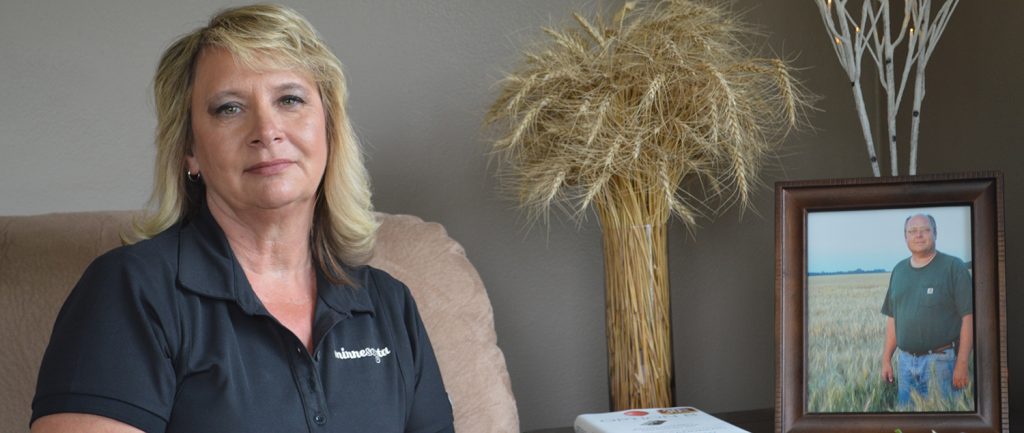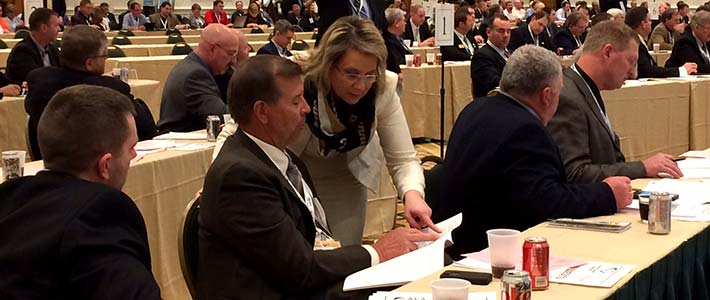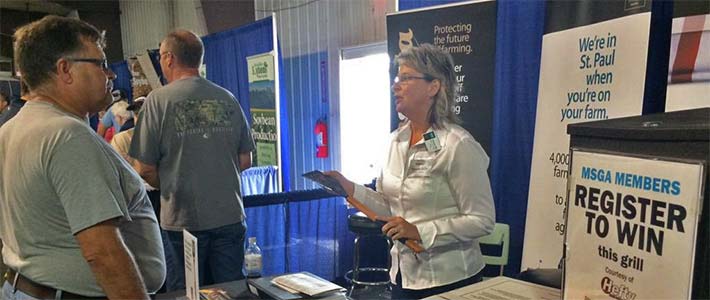For many farmers in Minnesota, flooding in the Red River Valley has been nothing more than a news story each year. But for the farmers and others who live in the Red River Valley, which covers Minnesota, North Dakota and South Dakota, flooding is a major problem.
On Monday, June 6, Congressman Kevin Cramer, R-N.D. and Minnesota Congressman and House Agriculture Committee Ranking Member Collin Peterson, D-Minn., hosted an Agriculture Committee Listening Session in Moorhead.
I was fortunate to attend the session on behalf of the Minnesota Soybean Growers Association (MSGA). Since the meeting was a listening session, only the Congressional leadership asked questions. Essentially, they were there to learn about the role of tile drainage and drainage management to complement the work of the Red River Retention Authority (RRRA) under the Regional Conservation Partnership Program (RCPP).
Also joining the discussion was the House Agriculture Committee Subcommittee on Conservation and Forestry Chairman Glenn “G.T.” Thompson, R-Pa., and Reps. Tim Walz, D-Minn., and Kristi Noem, R-S.D.
When it comes to tiling, the subject is often complex. Those who deal with tiling every day know the benefits it provides to soil health and water drainage. For farmers, this translates into more productive cropland. Brian Hefty, a South Dakota farmer who owns Hefty Seeds along with his family, said it best when he explained to the members of Congress that even if only 1 million crop acres in the Red River Basin were tiled and the yield increase was 15 percent at a gross cropland income of $350, an extra $52.5 million in gross cropland income would be generated each year.
Unfortunately, those are financial numbers that don’t hit home to non-farmers. But Hefty made a good point of bringing the tiling numbers back to the Red River Diversion, stating that just 1 million acres of the 25 million acres in the basin with drain tile installed correctly could hold back 122 billion to 408 billion gallons of water each year. If you pooled all that water into 32,500 acres being proposed as a staging area in the diversion project, the water would range from 12 feet to 38 feet deep.
Aside from the Red River Diversion project, another problem facing farmers is stalled tile projects. For those dealing with tiling, it isn’t uncommon for farmers to wait months, if not years, for federal officials to make a determination on whether or not a parcel is eligible to be tiled due to wetland determinations.
In the southern part of Minnesota, this is also a problem, but in the north where we have less tiling but are expanding, this is shocking, and state NRCS, Federal NRCS and U.S. Department of Agriculture (USDA) all play a role in these delays. Rep. Noem was harsh in her criticism of the backlog for farmers, stating that since she was elected, delays like this were common for her farmers.
When farmers are trying to do the right thing, trying to farm responsible and within the law, they constantly are hitting roadblocks. For their part, Rep. Noem and Rep. Cramer are submitting a bill to force the NRCS to cut down on the wait period for farmers. Peterson said he will also support the bill.
Ultimately, my presence, on behalf of MSGA, was to learn how we can help move those processes along in St. Paul, and if we can help have influence on our Congressman in D.C.
Theresia Gillie is a soybean farmer from Hallock, Minn. She is Vice President of the Minnesota Soybean Growers Association and is chair of the Advocacy action team. Theresia can be reached at theresia.gillie@gmail.com.





